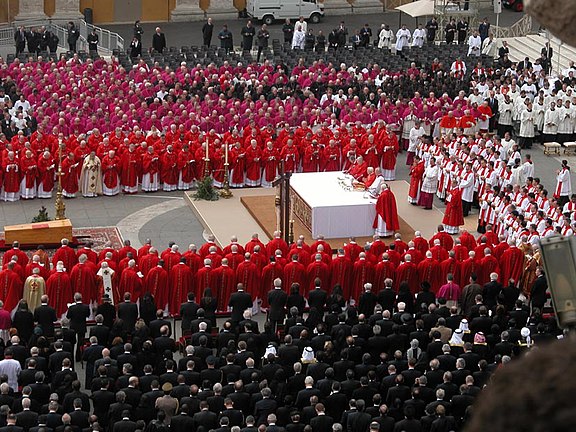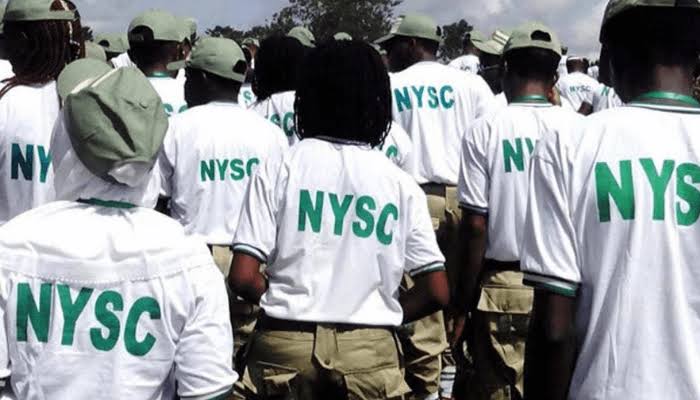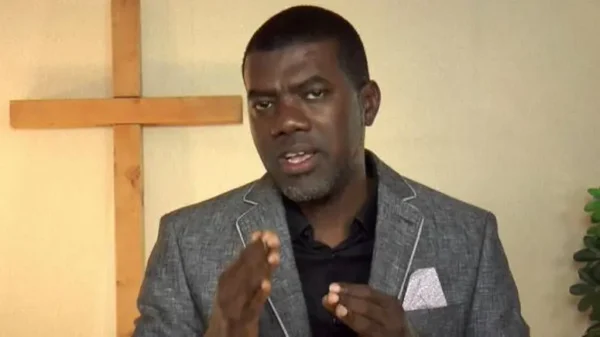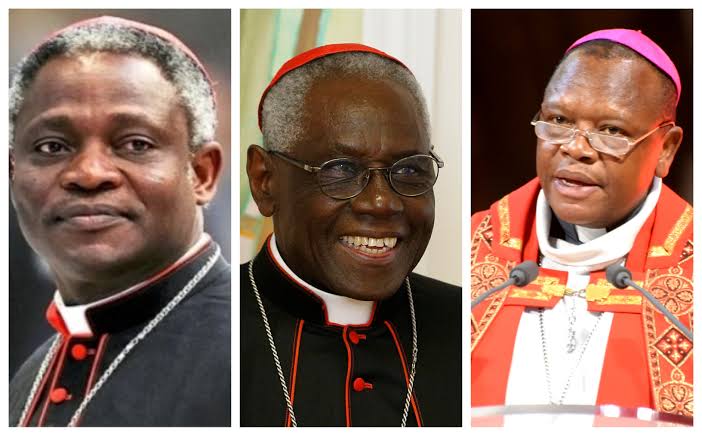The Sacred Conclave: Origin, tradition, process of electing a Pope

Cardinals in red vestments during the funeral of Pope John Paul II in 2005. Photo Credit-Wikipedia
As the world waits patiently for the next papal conclave which is expected to begin between May 6 and May 11, approximately 15 to 20 days after the death of the reigning pope the intricate and secretive process of electing the leader of the Catholic Church comes into full attention. Held in the Sistine Chapel, this centuries-old tradition is steeped in history, ritual, and a blend of spiritual and logistical precision. This piece is set to explore the origin, modern processes and global significance of the papal conclave.
How the tradition emerged
The election of a pope traces its roots back to the Apostolic Age, when the bishop of Rome like other bishops, was chosen by the consensus of the clergy and laity of the diocese. However, as the Catholic Church grew, so did the need for a more structured process. In 1059, the College of Cardinals was designated as the sole electoral body, a pivotal moment that formalized the selection of the pope. But it was until the 13th century that the conclave, as we know it today, began to take shape.
The term “conclave” derives from the Latin “cum clave” (with a key), a phrase that reflects the literal locking of cardinals in seclusion to ensure a swift decision. This practice was instituted by Pope Gregory X in 1274 during the Second Council of Lyons, following a chaotic reign from 1268 to 1271.
Frustrated by the long delays in electing a pope, Gregory X decreed that cardinal electors be confined until a new pope was chosen, with strict measures to hasten the process: their food rations were reduced after the fourth day, and further diminished after the ninth. The cardinals as expected complained about these rules and Pope Adrian V banned them in 1276, but John XXI revoked them later that year. This continued until 1294, under Pope Celestine V, that the 1274 rules were reinstated, making the conclave the cornerstone of papal elections.
RELATED STORIES
Ash Wednesday: Origin, significance, meaning behind the Christian ritual
What’s Palm Sunday? Nigerian cleric x-rays its meaning, significance
What is Good Friday? What the holy day means for Christians
How the election is done in modern times
As time rolled and the Catholic church expanded to more regions, modern adaptations of the ancient tradition of selecting the pope began to take shape. Today’s conclave held in the Sistine Chapel within Vatican City, is a carefully orchestrated event governed by centuries of papal rules and apostolic constitutions. In 1562, Pope Pius IV issued regulations on the enclosure of the conclave, while Gregory XV’s rules in 1621 and 1622 detailed the electoral processes and ceremonies. Pope Pius X combined these rules in 1904 with the apostolic constitution Vacante sede apostolica, which, with modifications, remains the foundation of the modern process.
As of April 23, 2025, the College of Cardinals consists of 252 members, of whom 135 are eligible to vote in the upcoming conclave. This eligibility is determined by age. Pope Paul VI ruled in 1970 that cardinals over 80 cannot participate, a reform aimed at ensuring a more dynamic electorate. In 1975, Paul VI further set the maximum number of cardinal electors at 120, though recent popes have frequently exceeded this limit. The recently deceased Pope Francis, for instance, reached a record of 140 electors in December 2024, reflecting his efforts to diversify the college with cardinals from underrepresented regions.
The conclave begins with the cardinals gathering in the Sistine Chapel, a space that has hosted this sacred ritual since the 15th century. The cardinals, dressed in their scarlet robes, swear an oath of secrecy before the voting begins. The process is meticulous: each cardinal writes the name of their chosen candidate on a ballot, disguising their handwriting to ensure anonymity. The ballots are then counted, requiring a two-thirds majority to elect a new pope. After each round, the ballots are burned, if no candidate achieves the necessary majority, a chemical is added to produce black smoke, signaling to the world that the conclave continues. White smoke is only produced when a pope is elected and announces the successful conclusion of the process.
How the Papal election affects the world
The election of a pope is not just a religious event; it’s a global one. The pope serves as the spiritual leader of billions of Catholics across the globe, as well as a diplomatic figurehead through the Holy See, which maintains relations with over 180 countries. The choice of pope can influence the Church’s stance on pressing issues like climate change, migration, and social justice, and they were among the priorities of Pope Francis which he championed since his election in 2013.
The composition of the College of Cardinals shows how the Church has expanded globally. Efforts to diversify the electorate began with Pope John XXIII in the 1950s, and by 1961, the college had grown to 88 members. Pope Paul VI continued this expansion, reaching 134 electors by 1969. Today, cardinals hail from every continent, a proof of the Church’s efforts to represent its diverse flock. However, this diversity also introduces complexity, cardinals bring varied cultural and theological perspectives to the conclave, making consensus a delicate task.
Conclusion: The 2025 conclave
As the world awaits the upcoming conclave, the process remains a proof of the Church’s ability to balance tradition with adaptation. The 135 eligible cardinals, representing a cross-section of the global Church, will gather in the Sistine Chapel to elect a new pope, their decision signaled by the iconic white smoke. While the secrecy of the conclave ensures that the world will never know the full story of their deliberations, the outcome will shape the Church and the world in the future.
In an era of rapid change, the conclave stands as a bridge between the ancient and the modern, a sacred ritual that continues to captivate and inspire. As the cardinals prepare to lock themselves away, they bear the hopes of billions, whether of the Catholic faith or not tasked with choosing a leader who will guide the Church through the challenges of the 21st century.




